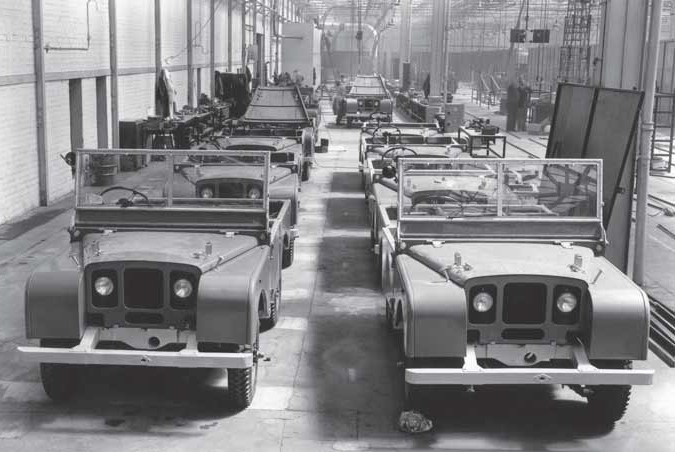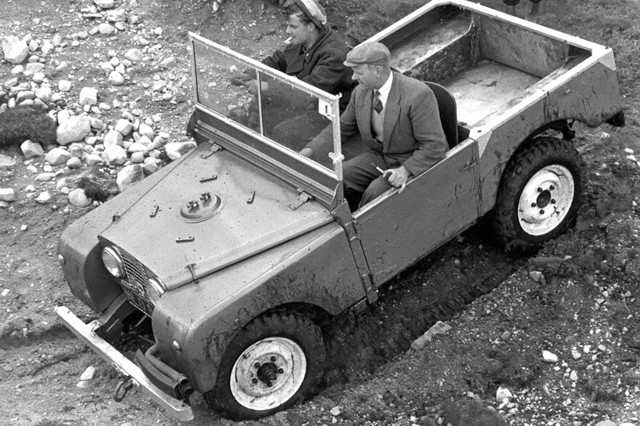
World Land Rover Day: A Celebration of Endurance, Innovation — and the Craftsmanship That Keeps Icons Alive
Each year on April 30th, enthusiasts, engineers, and adventurers around the globe mark World Land Rover Day — a moment of collective reflection on a marque that has never just been about vehicles, but about utility, freedom, and resilience. For those who know, it's far more than a heritage brand: Land Rover is a continuous narrative stretching from the windswept post-war beaches of Anglesey to the mountain passes of the Hindu Kush, still evolving, still inspiring.

It was on this day in 1948 that the first Land Rover was unveiled to the world at the Amsterdam Motor Show — a humble, slab-sided, function-first machine intended to get farmers through muddy fields and soldiers through difficult terrain. That Series I Rover could hardly have anticipated the legacy it would spark — one which now spans 75+ years and includes a deep, often emotional, connection between owners and their vehicles.
What sets Land Rover apart — and perhaps why the marque continues to inspire such fierce loyalty — is its ability to occupy seemingly contradictory spaces: utilitarian yet aspirational, rugged yet refined, nostalgic yet relentlessly modern. Whether in the stripped-down simplicity of a Series II or the electronically complex elegance of a new Defender, there is a through-line of purpose-driven design.
But Land Rovers don’t persist solely because they’re built to last. They endure because of the ecosystem around them — the engineers, craftspeople, tinkerers, and specialists who maintain, restore, and reimagine these machines long after they’ve left the factory floor. And within that ecosystem, few names resonate quite as clearly as Exmoor Trim.
Exmoor Trim: Quietly Supporting the Land Rover Legacy
Based in Somerset, Exmoor Trim has, for decades, been one of the most respected suppliers and manufacturers of interiors and soft furnishings for Land Rovers of all generations. Their contribution to the Land Rover story is not noisy or showy — but it’s deep, durable, and trusted. The company exists at that vital intersection between historical accuracy and modern usability. They know, for instance, that a proper Defender hood must look like it belongs in a 1990s military convoy — but that it also needs to handle 70mph winds and modern expectations of weatherproofing.
For restorers working on Series I, II or III projects, Exmoor Trim provides the closest thing to original equipment you can get without a time machine. Their canvas hoods, bench seat kits, and floor mats are not just facsimiles — they are the result of years of pattern-making, materials research, and dialogue with owners and experts. Each item they produce is the result of countless conversations between the past and present.
But Exmoor Trim isn’t merely in the heritage business. As Land Rover continues to evolve, so too does the company’s offering. For modern Defender owners who want to retain their vehicle’s character but with contemporary comfort, Exmoor has become the go-to source for high-quality upgrades that respect the original design language. Their seating systems, acoustic insulation kits, and bespoke trim options reflect a company that understands Land Rovers as living machines — not museum pieces.

Sustaining the Soul of a Vehicle
Anyone who has spent time with a Land Rover — especially the older ones — knows that the connection between driver and machine is not just mechanical. There’s a tactile quality to these vehicles that modern cars, however refined, often lack. The feel of the seat vinyl warmed by the sun. The unique rattle of the door latch on a Series III. The slightly damp smell of canvas after a night’s rain.
Exmoor Trim’s work — often invisible to the casual observer — preserves that emotional landscape. Their meticulous attention to the details of texture, smell, colour, and fitment is what allows restorers and owners to keep their vehicles authentic without descending into caricature. And for those who have turned a half-finished 90 or a battered old Series IIa into a reliable daily driver or a global expedition vehicle, Exmoor Trim has often been part of that journey — if not in person, then certainly in fabric.
World Land Rover Day: Looking Back, Driving Forward
World Land Rover Day is not just an occasion to look back at the marque’s military roots, Camel Trophy exploits, or its quiet role in post-colonial infrastructure-building. It’s also a time to look around — to appreciate the people and businesses that keep these vehicles going. Whether it's a galvanised chassis builder in Yorkshire, a gearbox specialist in Cornwall, or an interior expert in Exmoor, the story of Land Rover is also the story of British craft, persistence, and reinvention.
As electrification and AI creep into even the most unlikely corners of automotive design, the role of analogue vehicles — and those who keep them running — becomes more meaningful, not less. Exmoor Trim’s continued relevance is proof that traditional skills still have a place in the 21st-century motoring landscape.
So this World Land Rover Day, as we raise a glass (or maybe just a spanner) to Solihull’s finest, it’s worth remembering that heritage doesn’t maintain itself. It takes thousands of people who care deeply about getting it right — people who understand that keeping a Land Rover on the road is more than an act of maintenance. It’s an act of devotion.
And in that quiet devotion, Exmoor Trim has earned its place as one of the unsung heroes of the Land Rover community.




































































